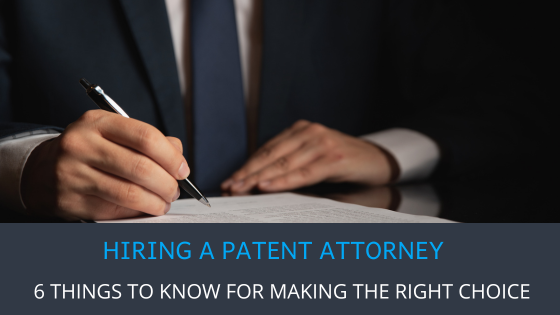Spent years on a game-changing invention only to have your patent application hit a wall at the patent office? That happens, but there is a way to avoid it.
The success of your patent often depends on which part of the patent office handles it—the art unit. An art unit is a group of patent examiners in the patent office, organized by technology area, responsible for reviewing specific types of inventions.
For instance, Serial Number 17/129,537 was assigned to art unit 3624, known for its stringent review process and low allowance rate. Despite several attempts, this application was eventually abandoned due to unresolved office actions.
In contrast, Serial Number 16/173,493 fell under art unit 2852, which boasts a high allowance rate of 97%. Here, examiner Sophia Chen swiftly approved the application without any rejections.
What if you could foresee which art unit your application would fall under and sidestep these setbacks?
A Patent Art Unit Predictor (AUP) helps you anticipate which art unit will handle your application, allowing you to adjust your strategy, reduce delays, save costs, and improve your chances of approval.
This article explores the top benefits of incorporating an AUP into your patent prosecution strategy, showcasing how it can fundamentally transform your patenting experience.
Check out the 5 Best Patent Art Unit Predictor Tools of 2024!
5 Must-Know Benefits of Incorporating an AUP into Your Patent Strategy
Just like the old saying goes, “Knowing what lies ahead is half the battle won.” In patent prosecution, a Patent Art Unit Predictor (AUP) gives you that edge.
Hence, here are five ways art unit predictors can be beneficial:
- Matches Innovations to the Most Likely Suitable Art Units
- Suggests a Group of Terms to Guide Patent Drafting
- Guides to Reduce Patent Prosecution Costs
- Assists to Prioritize Winning Ideas
- Guides for Improved Time Management in Prosecution
Also Check if You Making These Art Unit Predictor Mistakes?
Prefer video over reading? Skip the article and watch Tom’s video here for a quick rundown of the benefits of using a Patent Art Unit Predictor!
Let’s dive into each of these advantages one by one.
#1. Matches Innovations to the Most Likely Art Units
The USPTO assigns patent applications to specific art units based on the technology described. This process, once manual, is now driven by machine learning, improving consistency, speed, and accuracy while reducing human error.
Automation has also led to tools that can predict which art units are most likely to handle your application, closely aligning with the USPTO’s assignments.
Why does this matter to you?
As mentioned earlier, the resistance a patent application faces can be subjective, depending on the examiner. If a predictor tool indicates your application may land in an art unit with a low allowance rate, you might reconsider your strategy:
- You might decide not to file the patent at all.
- You could draft the application to steer it toward a different art unit.
- Or, you might research the examiners in that unit to prepare for potential office actions.
By using an Art Unit Predictor (AUP), you can avoid unfavorable outcomes and strategize for more favorable ones.
#2. Suggests a Group of Terms to Guide Patent Drafting
One of the primary benefits of the AUP is its ability to suggest the right set of keywords for specific art units. Based on these keyword suggestions, you can tailor your patent application in a way to avoid getting stuck in parts of the patent office with low approval rates or prolonged examination cycles.
As Thomas Franklin, Founder of Triangle IP, points out, ‘drafting at a high level with general terms can easily place your patent in a tricky art unit where you may face several rounds of rejections.’
Moreover, employing an AUP early in the ideation process can be extremely beneficial. It allows for guided patent drafting from the very start, minimizing the need for rework later on. This underscores the importance of integrating AUP tools with idea and patent management platforms.
The TIP ToolTM by Triangle IP, an idea and patent management software, comes with art unit prediction functionality. In fact, it goes a step further–Once you’re assigned an examiner, the tool provides specific statistics about that examiner, giving you a more informed view of your chances.
#3. Guides to Reduce Patent Prosecution Costs
Getting stuck in a long, costly patent battle is the last thing you want. That’s where an AUP tool comes in handy. Beyond just predicting where your application might land, the AUP gives you the foresight to sidestep expensive hurdles from the get-go. Some art units have extremely low allowance rates, leading to multiple rounds of argument—skyrocketing legal fees.
With the AUP’s insights, you can adjust your application before filing, avoiding the art units that tend to drag out the process. As Thomas Franklin pointed out, ‘Many cases that end up costing $70,000 in legal fees over 14 rounds of argument could have been resolved in just a couple of rounds with the right strategy from the outset.’ The AUP helps you manage costs more effectively, ensuring your patent prosecution stays on track without breaking the bank.
#4. Assists to Prioritize Winning Ideas
When it comes to patents, not all ideas are created equal. AUP enables businesses to figure out which of their ideas are likely to land in art units with high approval rates—and which ones might face tougher scrutiny. By analyzing the potential art unit from just an idea, the AUP gives you an early heads-up on whether it’s worth investing in that idea or shifting focus to something with better odds.
As Thomas Franklin puts it, “Knowing early on where your idea is likely to land helps avoid expending resources on patents with slim approval odds.” This allows businesses to strategically prioritize innovations, concentrating on ideas that are more likely to succeed.
By using the AUP early in the innovation process, you ensure that your R&D efforts stay focused on high-potential concepts, saving time and resources while maximizing your chances of success.
#5. Guides for Improved Time Management in Prosecution
In the race for market advantage, timing is everything. AUP tools play a crucial role in managing time during patent prosecution. The tool identifies whether your application is likely to be assigned to a challenging art unit, helping you avoid getting stuck in parts of the patent office with low approval rates or prolonged examination cycles. Misalignment with such art units can lead to significant delays—sometimes extending the process by years. For example, Serial Number 15/849,633 faced reassignment delays that lasted up to three or four years.
By using the AUP to align applications with art units known for faster, more efficient reviews, businesses can avoid these costly setbacks. This proactive approach not only saves time but also reduces the financial impact of extended prosecution, helping you bring your innovation to market sooner and secure a competitive edge.
To make the most of these benefits, it’s important to choose an AUP tool that integrates smoothly with your patent management system. Triangle IP’s Art Unit Predictor does just that, working seamlessly with the TIP Tool™ to streamline the patent process from start to finish. Let’s explore why Triangle IP’s AUP tool can be the best choice for your business.
Why Choose Triangle IP’s Patent Art Unit Predictor?
Patenting shouldn’t be a game of chance. Tom, being an experienced patent attorney, knows the struggle well. Small and medium-sized companies often see their innovations stalled by tough art units that demand long legal battles, drain budgets, and delay market entries.
That’s why Tom came up with the Triangle IP Art Unit Predictor. Unlike other predictor tools, this one isn’t just affordable—it’s transformative. It guides inventors by allowing them to predict, using just an idea summary—from as few as 50 words to a complete application excerpt of up to 10,000 words— which art units their applications might fall into. It utilizes a comprehensive database to provide accurate predictions and relevant keywords to optimize the draft, steering it toward more favorable art units.
Plus, it’s versatile: available both as a standalone tool and integrated within the TIP Tool™, making it an accessible and practical choice for businesses on tight budgets.
Here are the key features of the Triangle IP’s Art Unit Predictor that help in the process:
- Confidence Indicator: Each prediction comes with a confidence rating out of 5 stars, helping you prioritize based on reliability.

- Significant Terms Search Tool: Lets you select a specific art unit and access a list of important terms for that unit, highlighting their significance in different font sizes and colors.

- Allowance Rate Indicator: Displays past allowance rates for different art units in bar graphs, assisting you in targeting those with better approval probabilities.

If you’re ready to transform your patent strategy, experience how Triangle IP’s Art Unit Predictor can streamline your patent process today. Don’t miss out on the TIP Tool™—get your free demo now and ensure your innovations have the best chance for success.
FAQs
1. What is an Art Unit?
An Art Unit is a group of patent examiners within the patent office, organized by technology area. For example, you might have art units for biotech, business methods, or mechanical innovations. Each unit handles specific types of inventions, which allows examiners to specialize in reviewing applications related to those areas.
2. How does an Art Unit Predictor (AUP) work?
An AUP analyzes your patent application to predict which art unit will handle it. This prediction is based on the application’s content, helping you optimize your application to improve the chances of being assigned to the appropriate unit of examiners.
3. Why are art units important for patent applications?
Art units play a crucial role in how your application is examined. Each unit has its own allowance and rejection rates, which can significantly affect both the speed of the examination process and the likelihood of your patent being granted.
4. Can AUP tools help me avoid difficult art units?
Yes, AUP tools can help you identify art units that are known for having low allowance rates. With this information, you can adjust your application strategy to steer clear of these challenging units, increasing your chances of success.





